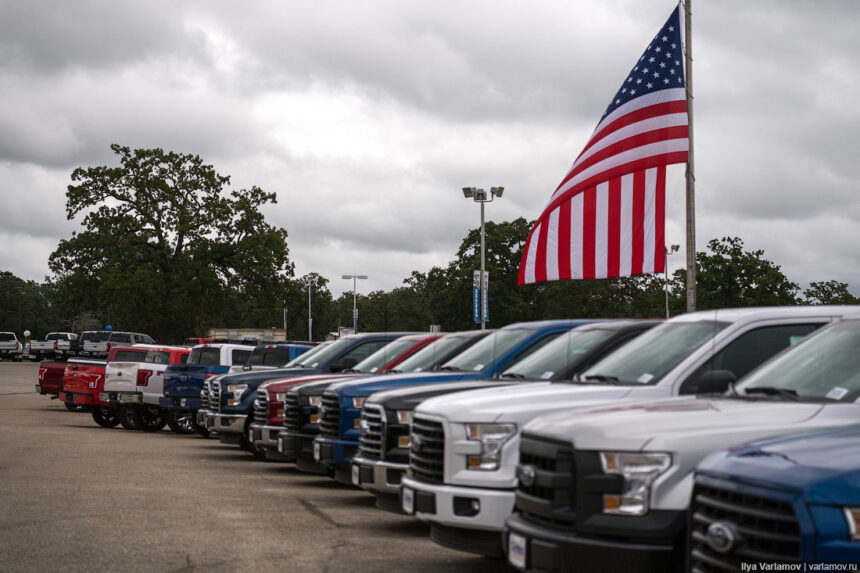The idea of a completely “Made in the USA” vehicle is enticing to many, but the reality is far more complicated. Take, for example, the 2025 Ford Expedition, which recently rolled off the assembly line at Ford’s Kentucky Truck Plant. While this large SUV is assembled by American workers using components built in the U.S., it’s far from a 100% American-made vehicle.
At least 58% of its major parts are sourced from outside the country, including 22% from Mexico. Among the imported parts is the vehicle’s 3.5-liter twin-turbocharged Ecoboost engine, designed by Ford engineers. This example demonstrates the complexity of the global automotive supply chain and highlights how even vehicles from iconic American companies, like Ford, rely on non-domestic content.
The Economic and Logistical Hurdles of Full Domestic Sourcing
The Kentucky assembly plant, where over 9,000 workers build the Expedition, F-Series trucks, and Lincoln Navigators, epitomizes the kind of facility that advocates for more U.S.-based production have long called for. Amid efforts to boost domestic manufacturing, former President Donald Trump imposed 25% tariffs on imported vehicles and parts, pressuring automakers to localize supply chains. This push was intended to spur economic growth and job creation in the U.S., but experts say a 100% U.S.-made vehicle is not feasible in the current landscape.
Read More: Moody’s US Downgrade Sparks Uncertainty Across Asia-Pacific Markets
According to Martin French, a longtime supplier executive, some parts will continue to be cheaper to produce overseas, even with tariffs in place. Factories in the U.S. are not equipped to produce certain essential components like steel, aluminum, and semiconductor chips at the scale required. Raw materials such as platinum and palladium, which are vital for automotive production, are also scarce in the U.S. and would require new plants or mines — a process that could take a decade or more to establish.
The Path to 75% U.S. Content
Additionally, the costs of a fully American-made vehicle would likely push prices so high that many consumers could no longer afford them, reducing demand and possibly leading to lower production. Ford CEO Jim Farley commented that while automakers can localize as much production as possible, “if every Ford is $50,000, we’re not going to win as a company.”
Currently, 15% to 20% of vehicle parts, such as small fasteners, wiring harnesses, and semiconductors, are difficult to source in the U.S., often relying on suppliers in Asia. On average, a vehicle contains about 20,000 parts, which may be sourced from up to 120 countries. The Ford F-150, for example, is assembled in the U.S. but still contains parts from around the globe. The complexity of these supply chains makes it nearly impossible for automakers to build a vehicle that is entirely sourced from within the U.S.
Also Read: UAE to Provide $11bn in Financing to Industrial Firms Over Next Five Years
To ease the burden of higher prices for American-made vehicles, the government could offer tax breaks or consumer incentives, akin to those previously promised for electric vehicles. However, the logistics and costs of ensuring that all parts are sourced from the U.S. are far more complex than they appear. Automakers report a combined percentage of U.S. and Canadian content, not just U.S. content, making it even harder to track the precise origin of every component.
In The End
Experts estimate that achieving a 100% American-made vehicle would add thousands of dollars to the cost of manufacturing. Mark Wakefield, a partner at consulting firm AlixPartners, suggests that getting close to 100% domestic sourcing could increase vehicle prices exponentially. Achieving 90% U.S. content would be very costly, while going beyond that would likely require significant investments in infrastructure and raw material sourcing — a process that could take 10 to 15 years.
Follow 10X Times for more business use.






